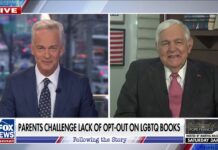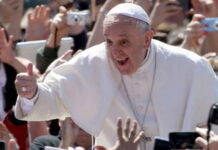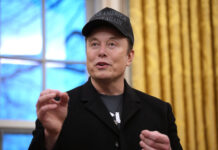
LGBTQ Literature is a Readers and Book Lovers series dedicated to discussing literature that has made an impact on the lives of lesbian, gay, bisexual, transgender, and queer people. From fiction to contemporary nonfiction to history and everything in between, any literature that touches on LGBTQ themes is welcome in this series. LGBTQ Literature posts on the last Sunday of every month at 7:30 PM EST. If you are interested in writing for the series, please send a message to Chrislove.
Good evening, faithful LGBTQ Literature readers. October is LGBTQ History Month, and I was really torn on what to write for this month. I toyed around with the idea of writing an overview of LGBTQ historiography—its origins, trends, debates, etc.—that would also include links to the foundational LGBTQ history books that have been reviewed in this series (most of them have). But in preparing for that diary, I realized there was a glaring hole in the list of foundational books this series has covered. One particularly important book was missing: George Chauncey’s Gay New York: Gender, Urban Culture, and the Making of the Gay Male World, 1890-1940 (1994).
There is no mystery as to why this book is missing. Gay New York is so important, so foundational, so enormous (it could be used as a doorstopper) that I was just plain intimidated by the thought of covering it in one of these diaries. In fact, it’s so key to our understanding of LGBTQ history that I’m sure many (if not most) readers of this diary have either read it themselves or at least heard of it. My worry, as always (but especially with this book), was doing it justice. Well, I’m probably not going to accomplish that. But I’m going to try, in honor of LGBTQ History Month. And I can finally mark this book off the list.
As I usually do with these LGBTQ history books, my goal in this diary (and especially for this book) is not to cover everything in the book. I am going to focus on the larger arguments advanced by the author, the historiographical context in which he was writing, and some of the reasons this book is so important.
George Chauncey really gets to the point in the opening paragraph of Gay New York, which essentially summarizes the 350+ pages that follow:
In the half-century between 1890 and the beginning of the Second World War, a highly visible, remarkably complex, and continually changing gay male world took shape in New York City. That world included several gay neighborhood enclaves, widely publicized dances and other social events, and a host of commercial establishments where gay men gathered, ranging from saloons, speakeasies, and bars to cheap cafeterias and elegant restaurants. The men who participated in that world forged a distinctive culture with its own language and customs, its own traditions and folk histories, its own heroes and heroines. They organized male beauty contests at Coney Island and drag balls in Harlem; they performed at gay clubs in the Village and at tourist traps in Times Square. Gay writers and performers produced a flurry of gay literature and theater in the 1920s and early 1930s; gay impresarios organized cultural events that sustained and enhanced gay men’s communal ties and group identity. Some gay men were involved in long-term monogamous relationships they called marriages; others participated in an extensive sexual underground that by the beginning of the century included well-known cruising areas in the city’s parks and streets, gay bathhouses, and saloons with back rooms where men met for sex.
None of this is necessarily surprising to a reader in 2022, maybe. But in 1994, when Gay New York was published, Chauncey was working to upend some pernicious myths about gay history—myths that other pioneering gay historians had also tried to disrupt.
In the early 1980s, when John D’Emilio published Sexual Politics, Sexual Communities: The Making of a Homosexual Minority in the United States, 1940-1970 (which would be one of the “founding” books establishing gay history as a field), he struggled against the conventional wisdom (among gay and non-gay people alike) that the gay movement began with the Stonewall rebellion of 1969 and the ensuing gay liberation movement. He showed that, actually, the gay political movement stretched back at least two decades, when homophile activists established organizations such as the Mattachine Society and the Daughters of Bilitis. Historians that followed—including Chauncey—would continue to push back the “beginning” of gay history earlier and earlier in the twentieth century. So in 1994, the idea that there was an open, visible gay world in New York at the turn of the twentieth century was indeed a rather bold assertion, because, as Chauncey notes, that world had been forgotten.
Chauncey identifies three myths that he seeks to challenge in Gay New York. The first myth (closely related to the “conventional wisdom” D’Emilio challenged) is what he calls “the myth of isolation”:
The myth of isolation holds that anti-gay hostility prevented the development of an extensive gay subculture and forced gay men to lead solitary lives in the decades before the rise of the gay liberation movement.
[…]
This has become the common wisdom for understandable reasons, for the policing of the gay world before Stonewall was even more extensive and draconian than is generally realized. A battery of laws criminalized not only gay men’s narrowly “sexual” behavior, but also their association with one another, their cultural styles, and their efforts to organize and speak on their own behalf. Their social marginalization gave the police and popular vigilantes even broader informal authority to harass them; anyone discovered to be homosexual was threatened with loss of livelihood and loss of social respect. Hundreds of men were arrested each year in New York City alone for violating such laws.
However, as Chauncey shows in the pages that follow, gay men were able to build their own “spheres of relative cultural autonomy” within this oppressive environment. Interestingly, Chauncey notes two researchers in the 1930s who were studying imprisoned gay men. This is a quote from their report, which really runs counter to the idea that gay people were “isolated” prior to Stonewall:
The homosexual’s withdrawal, enforced or voluntary, into a world of his own tends to remove him from touch with reality. It promotes the feeling of homosexual solidarity, and withdraws this group more and more from conventional folkways . . . and confirms them in their feeling that they compose a community within the community, with a special and artificial life of their own.
The second myth is “the myth of invisibility,” which maintains that any gay world that may have existed was invisible and therefore difficult for gay men to access. But this, too, is disproved by Gay New York:
But gay men were highly visible figures in early-twentieth-century New York, in part because gay life was more integrated into the everyday life of the city in the prewar decades than it would be after World War II—in part because so many gay men boldly announced their presence by wearing red ties, bleached hair, and the era’s other insignia of homosexuality. Gay men gathered on the same street corners and in many of the same saloons and dance halls that other working-class men did, they participated in the same salons that other bohemians did, and they rented the same halls for parties, fancy balls, and theatrical events that other youths did. “Our streets and beaches are overrun by . . . fairies,” declared one New Yorker in 1918, and nongay people encountered them in speakeasies, shops, and rooming houses as well. They read about them in the newspapers, watched them perform in clubs, and saw them portrayed on almost every vaudeville and burlesque stage as well as in many films. Indeed, many New Yorkers viewed the gay subculture’s most dramatic manifestations as part of the spectacle that defined the distinctive character of their city. Tourists visited the Bowery, the Village, and Harlem in part to view gay men’s haunts. In the early 1930s, at the height of popular fascination with gay culture, literally thousands of them attended the city’s drag balls to gawk at the drag queens on display there, while newspapers filled their pages with sketches of the most sensational gowns.
Further, gay men were visible not only to nongay people, but to each other, as well. Even in the midst of the risks to gay men in this era, they were able to develop codes of speech and dress that allowed them to recognize each other, even if they were “invisible” at the time to nongay people.
And finally, there is “the myth of internalization.” This is the idea that gay men internalized the dominant medical ideas at the time when it came to homosexuality and regarded themselves as sick and perverse. While Chauncey notes that some gay men openly voiced opposition to anti-gay laws and medical ideas, he argues that much of gay resistance during this period took other, more subtle forms.
Most gay men did not speak out against anti-gay policing so openly, but to take this as evidence that they had internalized anti-gay attitudes is to ignore the strength of the forces arrayed against them, to misinterpret silence as acquiescence, and to construe resistance in the narrowest of terms—as the organization of formal political groups and petitions. The history of gay resistance must be understood to extend beyond formal political organizing to include the strategies of everyday resistance that men devised in order to claim space for themselves in the midst of a hostile society.
(As a side note, when rereading this portion of the book, I realize that I make a similar argument when I teach slavery and resistance against slavery. I’m sure there are other areas, too, where we have a tendency to “construe resistance in the narrowest of terms.”)
And by the way, Chauncey brings up some really good examples of how gay men actively resisted the dominant anti-gay views of the period. He brings up a doctor, for example, who openly worried about how the “fags” he interviewed in the city jail were “proud to be degenerates, [and] do not want nor care to be cured.” While some gay men probably did internalize anti-gay views, many others clearly did not.
Going along with these myths, Chauncey looks to the modern metaphor of “the closet,” which originates with the gay liberation movement. The closet is seen as a kind of prison that keeps gay people isolated and invisible, and gay liberationists argued for the importance of “coming out” in order to become visible to the rest of society. However, Chauncey argues that this is a very modern idea and that gay men at the turn of the twentieth century did not have a similar metaphor. The term “coming out” was actually used in some cases, but it meant something else entirely. He brings up a 1931 article in the Baltimore Afro-American about a “pansy ball,” which states: “The coming out of new debutantes into homosexual society was the outstanding feature of Baltimore’s eighth annual frolic of the pansies when the Art Club was host to the neuter gender at the Elks’ Hall, Friday night.” Chauncey goes on to unpack this idea:
Gay people in the prewar years, then, did not speak of coming out of what we call the “gay closet” but rather of coming out into what they called “homosexual society” or the “gay world,” a world neither so small, nor so isolated, nor, often, so hidden as “closet” implies. The Baltimore debutantes, after all, came out in the presence of hundreds of straight as well as gay and lesbian spectators at the public hall of the fraternal order of Elks.
Another piece of “conventional wisdom” Gay New York challenges is the idea that there is a progressive arc to history and that the world we inhabit is necessarily “better” and more “progressive” than the world that came before us. This is not simply an idea relegated to gay history, of course, and can be found elsewhere as well. There is a common idea that history consists of what Chauncey calls “a steady movement toward freedom.” Chauncey makes the subversive argument that gay life was more open at the turn of the century than it was later in the same century:
This book argues that gay life in New York was less tolerated, less visible to outsiders, and more rigidly segregated in the second third of the century than the first, and that the very severity of the postwar reaction has tended to blind us to the relative tolerance of the prewar years.
This gets to the reasons why Chauncey believes we have forgotten this extensive and visible gay world that existed in the early twentieth century. The first reason is that it was forced from public view during a backlash period that lasted from the 1930s through the 1950s. During the 1930s, the government became much more concerned with regulating homosexuality, and the state developed an extensive apparatus to oppress gay people (this is a subject covered very well by Margot Canaday in her excellent 2011 book The Straight State: Sexuality and Citizenship in Twentieth-Century America). Then, in the 1940s and especially 1950s, anti-communist and anti-gay hysteria merged to create what David K. Johnson called the “Lavender Scare” (also the title of his 2006 book), when it became even more dangerous to be openly gay because of government repression. These decades, which were horrendous for gay people in the United States, forced the more tolerant years of the early twentieth century from public memory. In the years that followed, anti-gay prejudice in all areas of American life meant that it was that much more difficult to even study the gay past, meaning that academic historians wouldn’t touch this subject with a ten-foot pole (the second reason we don’t “remember” this period). And, related to that, a third reason is that we’re so removed from the prewar gay world that historians didn’t even know what to look for, even if they did want to study this gay past. And finally, Chauncey believes that the fourth reason that we’ve forgotten this period of gay history is that the explosion of gay life and political movements after World War II overshadowed anything that came before.
I’m just about done with my overview of Gay New York, its arguments, and its importance to the field of LGBTQ history. However, one more thing that I want to address (and to which Chauncey has devoted quite a bit of explanation) has to do with our modern understanding of the homosexual/heterosexual binary. Today, in the year 2022, I think we do have a better understanding of sexual fluidity and the idea that not everybody’s sexualities can fit into tidy little boxes. Human sexuality is extraordinarily complicated, and terms like “gay” and “straight”—while convenient and important for other reasons—don’t always work. But in 1994, this binary was even more rigid than it is today, and Chauncey takes care to explain that people in the early twentieth century did not see themselves as fitting into a binary.
This book argues that in important respects the hetero-homosexual binarism, the sexual regime now hegemonic in American culture, is a stunningly recent creation. Particularly in working-class culture, homosexual behavior per se became the basis for the labeling and self-identification of men as “queer” only around the middle of the twentieth century; before then, most men were so labeled only if they displayed a much broader inversion of their ascribed gender status by assuming the sexual and other cultural roles ascribed to women. The abnormality (or “queerness”) of the “fairy,” that is, was defined as much by his “woman-like” character or “effeminacy” as his solicitation of male sexual partners; the “man” who responded to his solicitations—no matter how often—was not considered abnormal, a “homosexual,” so long as he abided by masculine gender conventions. Indeed, the centrality of effeminacy to the representation of the “fairy” allowed many conventionally masculine men, especially unmarried men living in sex-segregated immigrant communities, to engage in extensive sexual activity with other men without risking stigmatization and the loss of their status as “normal men.”
Only in the 1930s, 1940s, and 1950s did the now-conventional division of men into “homosexuals” and “heterosexuals,” based on the sex of their sexual partners, replace the division of men into “fairies” and “normal men on the basis of their imaginary gender status as the hegemonic way of understanding sexuality. Moreover, the transition from one sexual regime to the next was an uneven process, marked by significant class and ethnic differences. Multiple systems of sexual classification coexisted throughout the period in New York’s divergent neighborhood cultures: men socialized into different class and ethnic systems of gender, family life, and sexual mores tended to understand and organize their homosexual practices in different ways. Most significantly, exclusive heterosexuality became a precondition for a man’s identification as “normal” in middle-class culture at least two generations before it did so in much of Euro-American and African-American working-class culture.
Chauncey has much more to say about this, but I’ll leave it there.
Gay New York was (and remains) a groundbreaking work of historical recovery. It completely upended many wrongheaded assumptions about gay life in the early twentieth century made not only by laypeople (gay and non-gay alike), but also by professional historians. Historians in the years that followed would continue to push back against these assumptions and illuminate the ways in which gay people existed and, in many cases, thrived in the years preceding the gay liberation movement. This book remains essential reading for anybody interested in understanding the long view of LGBTQ history.
LGBTQ LITERATURE SCHEDULE (2022)
If you are interested in taking any of the following dates, please comment below or send a message to Chrislove. We’re always looking for new writers, and anything related to LGBTQ literature is welcome!
January 30: Ushka Waso
February 27: OPEN
March 27: Chrislove
April 24: Clio2
May 29: Chrislove
June 26: ChrisloveJuly 31: OPENAugust 28: OPEN
September 25: bellist
October 30: Chrislove
November 27: OPEN
December 25: OPEN
READERS & BOOK LOVERS SERIES SCHEDULE
If you’re not already following Readers and Book Lovers, please go to our homepage (link), find the top button in the left margin, and click it to FOLLOW GROUP. Thank You and Welcome, to the most followed group on Daily Kos. Now you’ll get all our R&BLers diaries in your stream.








